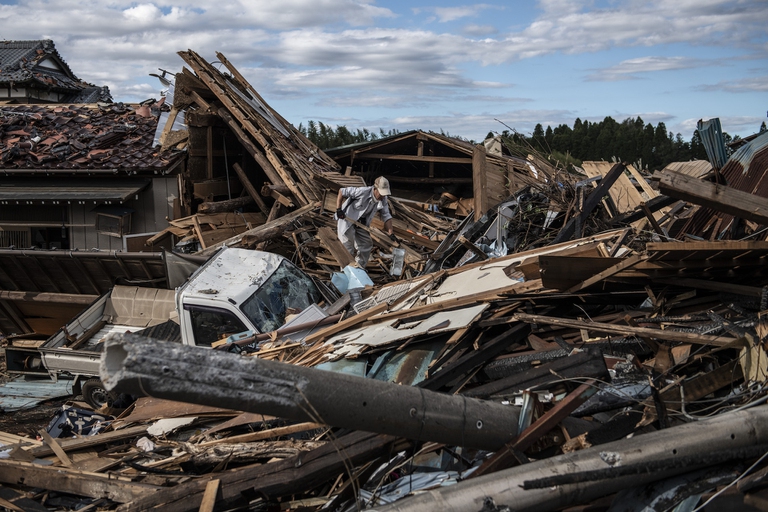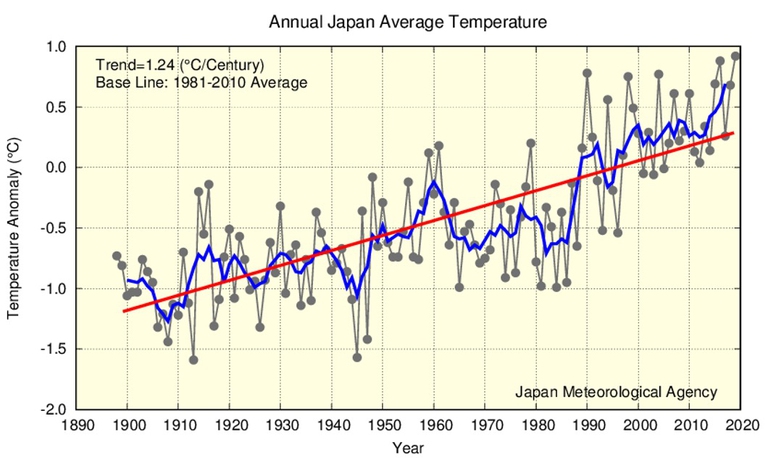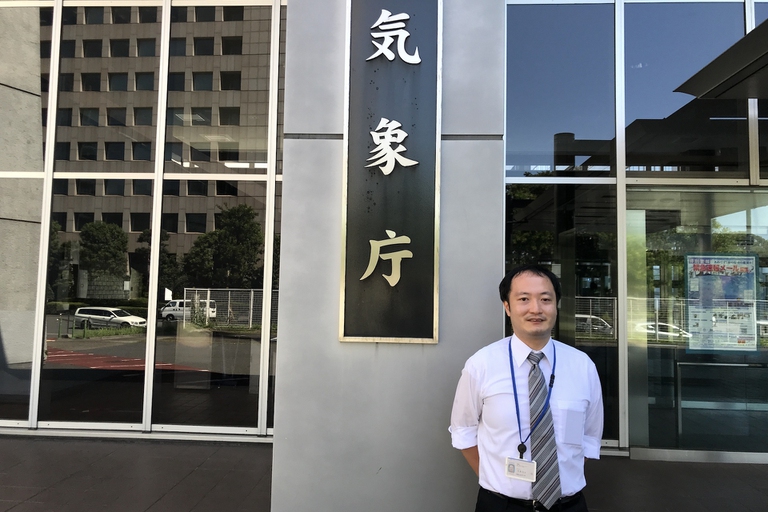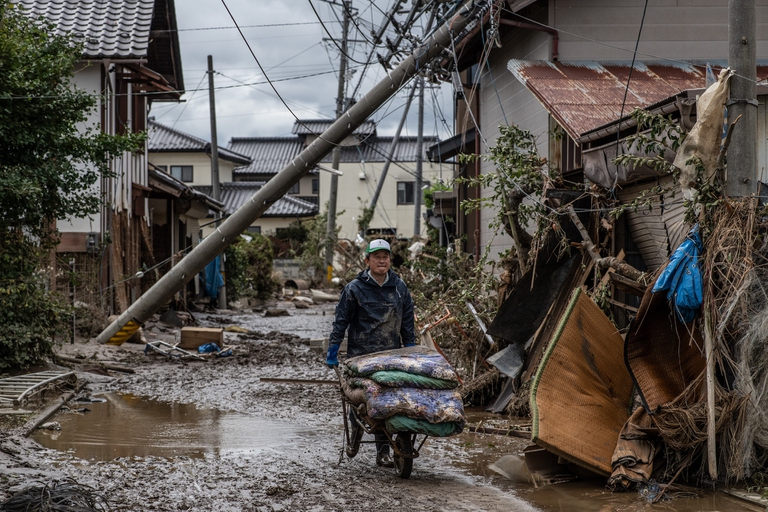Typhoon Haishen pic.twitter.com/TbnlJC7taw
— Chris Cassidy (@Astro_SEAL) September 6, 2020

Rosebank and other fields would push the UK’s oil and gas industry almost 40 percent past its carbon budget
Typhoons will become more intense as a result of global warming, but Japan must do more to prepare itself for the perfect storm.
“Statistically significant long-term changes haven’t been seen in the number of tropical cyclones forming in the Northwest Pacific Ocean and those approaching Japan in the last seventy years,” i.e. in the period for which reliable data is available. “It isn’t the case that the number of tropical cyclones is increasing, at least in the period between 1951 and 2019. The number of strong tropical cyclones also doesn’t show any statistically significant long-term trends”.
Atsushi Goto, climate expert at the Japan Meteorological Agency (JMA) weighs his words carefully. They may seem surprising in light of disastrous typhoons like Maysak and Haishen, both of which hit Japan this season separated only by a few days. However, “the intensity of tropical cyclones is expected to increase in association with climate change,” Goto adds. If up to now Japan’s typhoon season – concentrated in the months of September and August – hasn’t changed significantly, the dark clouds on the horizon appear more threatening than ever.
Typhoons, hurricanes and cyclones are different names for the same meteorological phenomenon, known scientifically as a tropical cyclone. It forms, as the name suggests, in the tropics: warm air rises from the oceans and results in the formation of clouds and winds that, fuelled by the oceans’ heat and water vapour, lead to the Earth’s most violent storms.
These are known as tropical cyclones when their winds reach 119 kilometres per hour, and their name changes based on their location. Typhoons occur in the region of the Northwest Pacific Ocean and affect countries such as Japan, North and South Korean, China, Taiwan, Malaysia, Singapore, the Philippines, Thailand, Laos, Cambodia and Vietnam.
The first recorded use of the word “typhoon” in English dates back to 1588. It is believed that the term derives from the Chinese word tai fung and ṭūfān in Arabic. Typhoons are frequent phenomena, with whom the peoples of Eastern and Southeastern Asia have historically learnt to cope with. But things are changing.
On the 3rd of September, Maysak made landfall in South Korea, killing two people after having caused a number of injuries on the Japanese island of Kyushu and, further south, the shipwreck of a cargo vessel with 43 crew members on board (three of whom were saved) and almost 6,000 cows. Haishen, instead, made landfall on the 7th of September, again in South Korea, leaving a path of destruction behind itself in Japan: two victims, four people missing, hundreds injured and two million evacuated. The fact that these tropical cyclones took place only a few days from one another, “is a rare case but it isn’t the first time,” Goto explains.
The destruction from these events pales in comparison to that in October 2019 caused by Hagibis, one of the strongest typhoons to hit Japan in decades, which killed hundreds of people and led to over ten million US dollars in damages as well as the interruption of the Rugby World Cup. The wounds left behind by the storm are still visible all over the country. The fact that it took place in October isn’t anomalous in and of itself, as statistically this occurs once every five years, but “the typhoon caused crucial damage and flooding in a very wide area,” Goto explains: “I never expected to see Japan suffer such large damage, especially the east of the country. Usually, when typhoons approach eastern Japan they’re in the stage of weakening. But Hagibis kept its intensity”.
“The energy source of tropical cyclones is water vapour in the atmosphere,” says Goto, who coordinates international cooperation activities for the department dedicated to climate predictions of the Tokyo Climate Center, the JMA’s international arm and one of the World Meteorological Organisation (WMO)’s specialised Regional Climate Centres. “When water vapour condenses to form clouds or raindrops, it releases heat. This heat strengthens the circulation or upward motion of the cyclone. The fact that a warmer atmosphere can contain more water vapour is one of the mechanisms that explains why tropical cyclones will intensify under warming climate conditions“.
Temperatures are already rising. In August, those of the ocean’s surface south of Japan were much higher than average according to the JMA. National temperature averages on land have already increased by 1.24 degrees Celsius per century, faster than the global rate. Not only. From the 1970s to today, “we see a significant long-term increase in the annual number of days with more than 200 millimetres of rain in Japan, which we predict will continue steadily or increase more rapidly,” Goto explains. “On the other hand, the annual number of days with precipitation has decreased. This trend indicates that the risk of drought will increase in the future, as well as that of landslides and floods”.
Japan is particularly subject to natural calamities such as typhoons, torrential rain, landslides, and more. The country even has a ministry of disaster management. However, it is yet to be seen whether its citizens’s historic tenacity and capacity to get back on their feet even after the worst catastrophes will translate into resilience in the face of the climate crisis.
The Japanese state has undertaken large-scale public works to control the flow of virtually all its rivers, and therefore reduce the impact of flooding, especially starting from 1958 when a violent typhoon killed over a thousand people. However, “Japan has used past rainfall records to design infrastructure, such as how high barriers should be: this won’t be enough to adapt to future climate change,” Goto points out.
While the government is engaged in research into how new infrastructure can be built based on future predictions rather than past statistics, engineering isn’t a silver bullet. For instance, levees built over the course of decades failed to contain the flooding of rivers during Typhoon Hagibis’ record rainfall, with 90 centimetres falling in just 24 hours in the area of Hakone, southwest of Tokyo. The only real solution is tackling the underlying causes behind the intensification of extreme weather events. “Japan’s climate change mitigation efforts aren’t enough, there’s a lot more it can do,” Goto believes. For example, the country hasn’t strengthened its Nationally Determined Contributions to reduce greenhouse gas emissions, even though all countries are called to do so to respect the Paris Agreement‘s provisions.
“Japanese citizens are increasingly recognising the risks of a changing climate, but there’s a gap between awareness and actual changes in habits or behaviours. I want to bridge this gap through my work, by sharing our expert knowledge with the public,” Goto says. In the face of the climate crisis, the scientist can’t be neutral. “I’m worried,” he confesses. “According to the JMA’s future projections, the frequency of heavy rainfall will double by 2100. I hope our projections are wrong and that we can change the future through our behaviour and mitigation efforts. For this reason, I’ll continue studying the changing climate”. But that’s not enough. It is up to individuals, communities and institutions to act upon Goto’s observations and analyses, and those of all the other scientists who, like him, are raising the alarm.
| Formation | Approach | Landfall | |
|---|---|---|---|
| January | 0,3 | - | - |
| February | 0,1 | - | - |
| March | 0,3 | - | - |
| April | 0,6 | 0,2 | - |
| May | 1,1 | 0,6 | 0,0 |
| June | 1,7 | 0,8 | 0,2 |
| July | 3,6 | 2,1 | 0,5 |
| August | 5,9 | 3,4 | 0,9 |
| September | 4,8 | 2,9 | 0,8 |
| October | 3,6 | 1,5 | 0,2 |
| November | 2,3 | 0,6 | 0,0 |
| December | 1,2 | 0,1 | - |
| Annual total | 25,6 | 11,4 | 2,7 |
Siamo anche su WhatsApp. Segui il canale ufficiale LifeGate per restare aggiornata, aggiornato sulle ultime notizie e sulle nostre attività.
![]()
Quest'opera è distribuita con Licenza Creative Commons Attribuzione - Non commerciale - Non opere derivate 4.0 Internazionale.
Rosebank and other fields would push the UK’s oil and gas industry almost 40 percent past its carbon budget
UN Secretary-General António Guterres said the era of global warming has ended and “the era of global boiling has arrived.”
The UN General Assembly (UNGA) on Wednesday, 29 March 2023, adopted a resolution seeking the International Court of Justice (ICJ), the UN’s chief judicial organ, which is also referred to as the World Court, for an advisory opinion on the duties of States concerning climate change. This decision marks the first time the World Court
Canada’s wildfire season this year is impacting air quality way beyond the borders of the North American state, reaching as far as Europe.
Wildfires in central and southern Chile, caused by extreme temperatures and drought, have already burned over 270,000 hectares of land.
Ocean heat content in the upper layers of our seas reached another record high in 2022, according to an international study published in January.
Increasing global average temperatures cause sea levels to rise and threaten the homes and livelihoods of many coastal communities in northern Europe.
After a landslide led to twelve deaths on the island of Ischia, questions have been raised about the impacts of illegal building, tourism, and climate change.
Santa Olalla, the last permanent lagoon in the park, has disappeared under the pressure of drought, overexploitation, and illegal wells.














